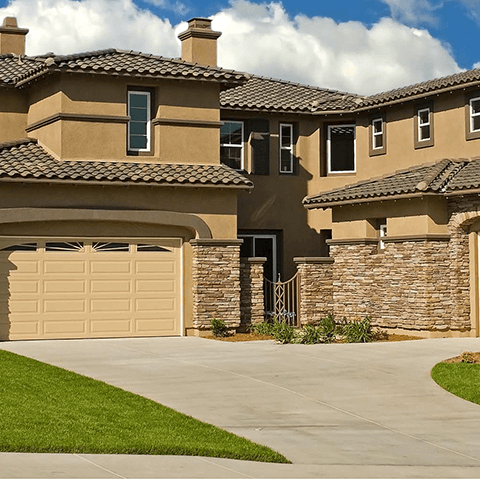
8 WAYS TO LOWER YOUR HOME EXPENSES
Congratulations! You did it—you’re now a homeowner. Now that most of the boxes are unpacked, and your new place is starting to feel like home, it’s time to make sure you aren’t wasting money each month. Here are a few tips to keep in mind as you look for ways to make your home as efficient as possible and lower your home expenses.
Indoor Energy Drains
Even if at first glance you do not see anything that is costing you money on your monthly utility bills, you owe it to your budget to look a little deeper. Many hidden factors could be costing you money unnecessarily. Start with the inside by checking these common items.
Thermostat
First, look at your thermostat. Considering how much time we spend at work during the day, it doesn’t pay to keep the air conditioner or furnace running more than absolutely necessary. Look into installing a programmable thermostat so you don’t have to try to remember to change the settings on a daily basis. That way, you can have your house at a comfortable temperature by the time you get home.
Water Heater
Speaking of thermostats, check the one on your water heater, too. Ideally, it should not be set above 120 degrees, since water hotter than that can cause injury, and the amount of energy needed to keep the water that hot is an inefficient use of resources. If you are in the market for a new water heater, you can also consider tankless options. These draw the water directly from a heating panel, so large quantities of water do not sit in a tank for long periods of time. While tankless units are more expensive up front, they use anywhere from 30 to 50% less energy than traditional tanks, saving you money year after year. They also take up less space. However. they also have special installation requirements, so if you are considering one do your research beforehand.
Windows
Your windows are another big place to look if you want to lower your home expenses. Particularly if you purchased an older home, check the windows for drafts. If you live in a cold-weather area, you will see a dramatic increase in your energy bills once the temperatures drop. You can easily seal up any cracks or gaps yourself with a tube of caulking, which is readily available at any hardware store.
Attic
Many people forget about the attic insulation, which can dramatically impact both heating and cooling costs. This is also something you can probably take care of yourself, either with rolled or blown insulation. Insulation levels are measured by a scale called the R-Value. Generally, homes should have an R-Value of 38, which requires 10-14 inches of insulation. As long at the existing insulation is not wet, you can install new insulation over the old.
Appliances
If you are looking for new appliances for your home, look for the Energy Star logo. This indicates they have passed inspection and consume anywhere from 10 to 50 percent less energy than their traditional counterparts. Everything from microwaves to washers and dryers has an Energy Star option, so you may need to do additional research on price point compared to what each appliance may save you over the course of a year to make the best choice for you. If you need new appliances anyway, this can be another great way to help lower your home expenses.
Outdoor Energy Drains
While the inside may have more opportunity for improvement, what’s outside can also cost you money unnecessarily. Consider these additional ways to save money each month. Not only can you lower your home expenses, but you can even help the environment in some cases. Don’t overlook these additional ways you can cut down on unnecessary expenses.
Roof
When it comes to improving efficiency from the outside, the roof is the first place most people will look. If you are in the market for a new roof anyway, look into cooler options. Many states, including California, have initiatives in place to encourage homeowners to install roofing material that will keep the temperature of the attic far cooler than with a traditional, dark-colored asphalt shingle. The Cool Roof Rating Council (CRRC) certifies solar reflectance and thermal emittance values of roofing products.Visit www.coolroofs.org for more information.
Storm Doors
Another option to consider for overall energy efficiency is to install storm doors. This added layer of insulation keeps the cool air inside during the summer, and the warmer air inside during cooler months. Just like appliances, doors carrying the Energy Star seal have been certified to be more energy efficient than those that do not.
Composting
A lesser-thought-of way to reduce energy consumption is to start a compost pile. Why does this help? By creating your own compost, you create all the fertilizer you need for your garden while you reduce the amount of garbage you produce. This reduces strain on local landfills. It may even reduce your monthly garbage fees if you find you do not need as large of a can, or as frequent of a pick-up. Plus, you can feel good about:
- Helping the environment
- Keeping food waste out of landfills
- Creating natural fertilizer you can use to grow your own fruits and vegetables
Starting a compost bin is relatively inexpensive and easy to do. And you do not need a large yard. For tips on how to get started, visit eartheasy.com.
Many factors impact what you spend on your home every month. When you focus just on the mortgage payment, you lose sight of the smaller expenses that come with home ownership–but that can add up over time. And when you lower your home expenses, you have more room in your budget for other purposes. Using these tips will save you money in ways that perhaps you never thought of before.

